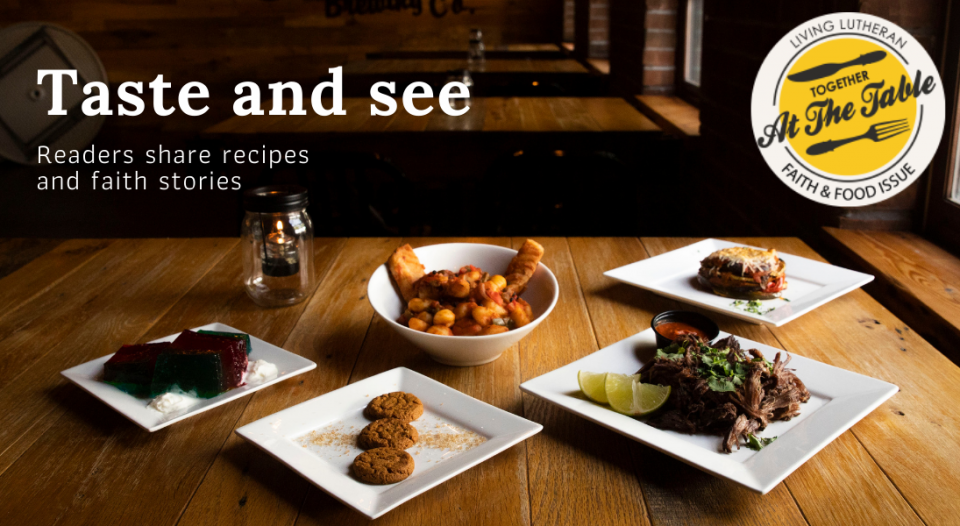Editor’s note: This reader recipe is an online addition to our November 2020 cover story, “Taste and see.”
St. Martin’s goose (Martinsgans)
By Lutz Backmann
Here in Germany, it’s a widespread custom to eat a roasted goose on or around St. Martin’s Day. In fact, there are two feasts when we Germans like to eat a roasted goose—on St. Martin’s Day and on Christmas Day.
The custom to eat a goose on St. Martin’s Day is much older than the one to eat a goose on Christmas Day. There are two explanations for the custom.
One of them relates to the part of the legend of St. Martin when he hid in a goose pen to avoid a call to become a bishop and the cackling of the geese disclosed his hiding place. So our meal is in a way a revenge of St. Martin.
The other, and more plausible, explanation is that, in the old days, St. Martin’s Day marked the end of the working year of the peasants. So, the ending of the harvest season was a reason for a feast.
Often peasants gave their farmhands and milkmaids a goose as a bonus. Domestic geese are animals that are easy to keep. From spring to fall they just live in meadows and eat the grass there. Often a boy who was too young to perform heavy physical labor tended them.
And when the grass withered, their days were over.
In many towns and villages here in Germany, St. Martin’s parades are performed as a lantern parade. Often a horseman dressed up as a Roman officer leads the parade in remembrance of the famous scene when St. Martin shared his coat with a beggar at the city gate of Amiens and Christ appeared to him in a dream the next night in the person of this beggar.
The parade starts with a sort of short prayer service, sometimes including a St. Martin’s play, and ends with a campfire and the sharing of a St. Martin’s croissant. It’s a way to teach children the meaning of Matthew 25:31-46.
And when the parade is over, we gather with family and friends and eat two or three geese that my wife prepared in the morning or the day before. My part in the preparations is to pick the geese out and to guard them while they’re in the oven, and I enjoy our get-together. When all is eaten and the evening over, all look forward to Christmas, when the next geese will adorn the table.
I know that there’s a common opinion in the United States that geese are way too fatty. That’s not true. If they are roasted, they are just delicious. And by no means fatty. And, furthermore, I know that domestic geese are difficult to get in the United States. But they are definitely worth (almost) all efforts to get one of them.
Our congregation—Evangelical-Lutheran St. Nicholas Church, Pulsnitz—is located in the birthplace of Bartholomew Ziegenbalg, the first Lutheran missionary who worked in an area, in Tranquebar in India, where no Lutherans lived before. We are a member congregation of the Evangelical-Lutheran State Church of Saxony (Evangelisch-Lutherische Landeskirche Sachsen), a German member church of the Lutheran World Federation.
Ingredients
1 goose, prepared and ready to cook (10-14 pounds)
Salt
Pepper
Ground sweet paprika
Bunch of mugwart
3-4 apples
3-4 onions
3-4 cloves garlic
Instructions
- Wash goose inside and outside, then pat with a clean towel until dry outside.
- Mix salt, pepper and ground sweet paprika, and spice the goose inside and outside with the mix.
- Cut apples and onions in quarters and place them inside the goose (there’s a wide variety of stuffing, depending on taste; people use sweet chestnuts or prunes instead of or in addition to the apples; we sometimes stuff our goose only with onions and a few cloves of garlic). It’s not necessary to close the goose with yarn or toothpicks.
- Place the goose breast-down in the frying pan; add the garlic cloves, the mugwart and 2 1/8 cups of water.
- Put the frying pan into the oven and roast the goose at 390 degrees (convection oven, 370 degrees) for an hour. Turn the goose around, reduce the heat to 375 degrees (convection oven, 350 degrees) and roast it for another two and a half hours (or reduce the heat to 175 degrees and roast the goose for another seven to eight hours).
- Remove the frying pan from the oven, skim off the fat, remove the remnants of the mugwart and garlic cloves from the juice and keep the goose warm.
- Cut the goose into pieces (there are people, such as my wife and mother, who like to eat the stuffing the next day, but you can also throw it away) and serve it with potato dumplings (usually we serve frozen dumplings or make them from dumpling dough from the grocery; I hope such products are available in the United States too) and red cabbage. I like it best with kale, but I think most people here wouldn’t agree with my preference.
Find more reader recipes by clicking the “recipes” tag below.




